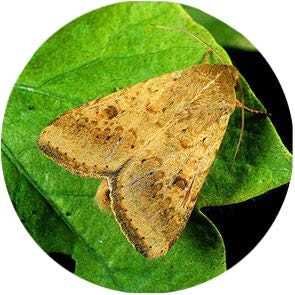


| Latin Name | Helicoverpa armigera |
| Common Name | Cotton bollworm |
| Biology | Adults are nocturnal with strong flight ability, sensitive to black light traps and sex pheromones, and lay eggs on the undersides of leaves. Larvae are highly polyphagous, damaging leaves, flowers, buds, fruits, etc.; infested fruits develop holes, severely affecting yield and quality. This pest occurs 3-7 generations annually, overwinters as pupae in soil, and is a global agricultural pest. |
| Damage | This pest damages multiple crops such as cotton, corn, tomatoes, peppers, and legumes. |
| Distribution Regions | Global cotton-growing regions |
| Monitoring | Pheromone lures mimic natural sex pheromones to attract male insects into specialized traps for population monitoring and suppression. As a core IPM component, monitoring enables early risk detection and targeted control. Mass trapping reduces mating opportunities to curb offspring populations. Protocols: ●Use only with matched traps. ●15-45 traps/hectare,replace/replenish every 4-6 weeks. ●Wear gloves or wash hands with detergent when switching lure types. ●Refer to trap-specific hanging instructions. |
| Recommended Traps | Delta Trap, Wing Trap |

分享您的联系信息,即可获得精准匹配的信息素解决方案。如果我们现有的产品组合缺乏最佳匹配,我们的合成化学团队将启动定制开发——从分子结构设计到规模化生产。